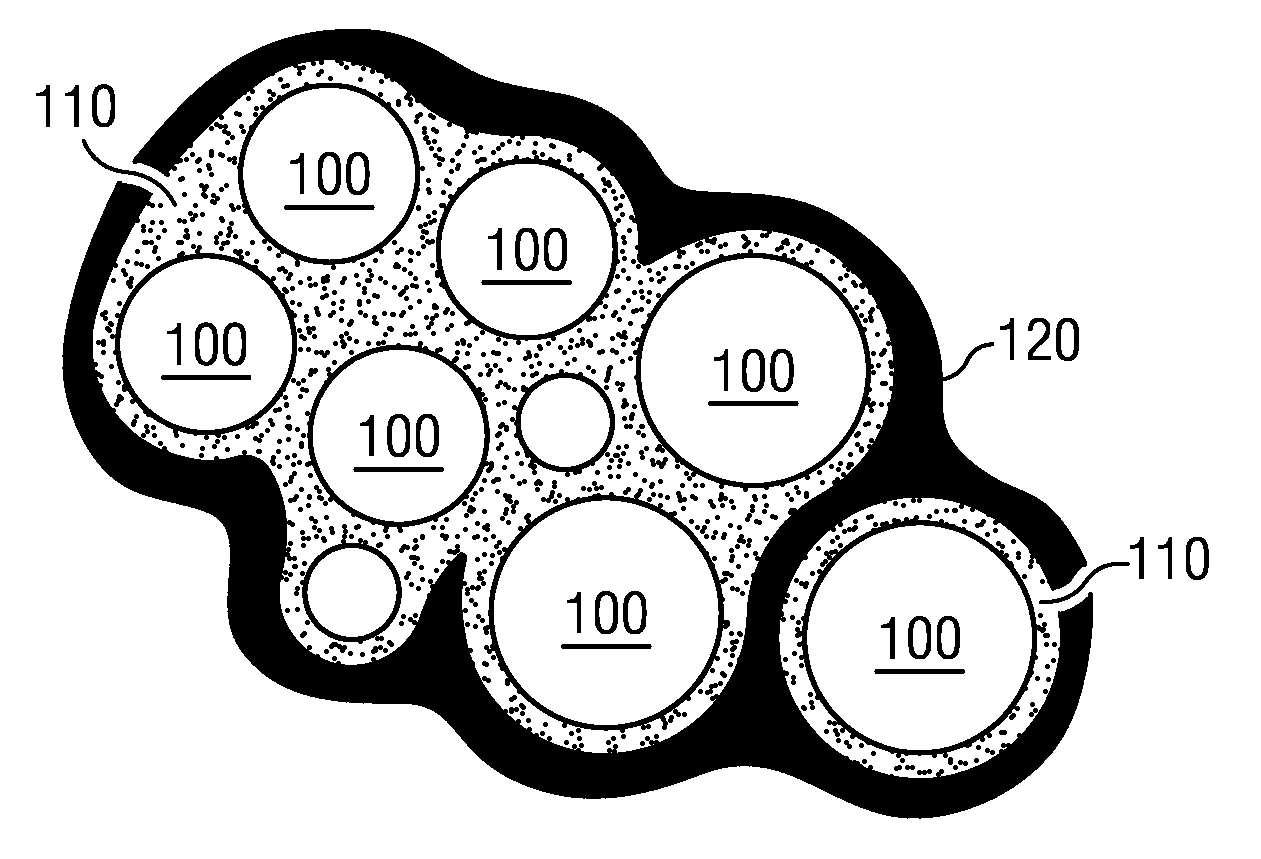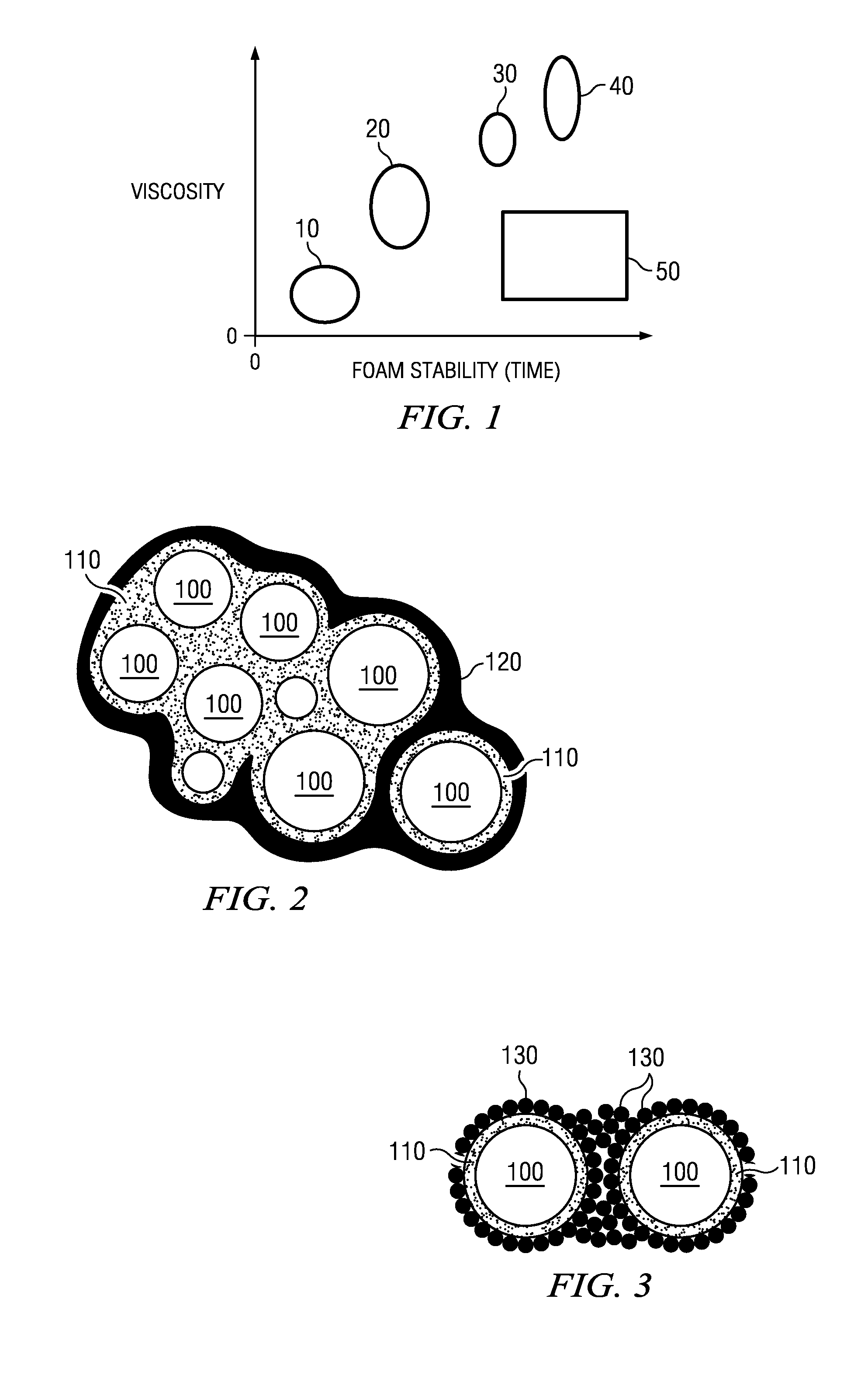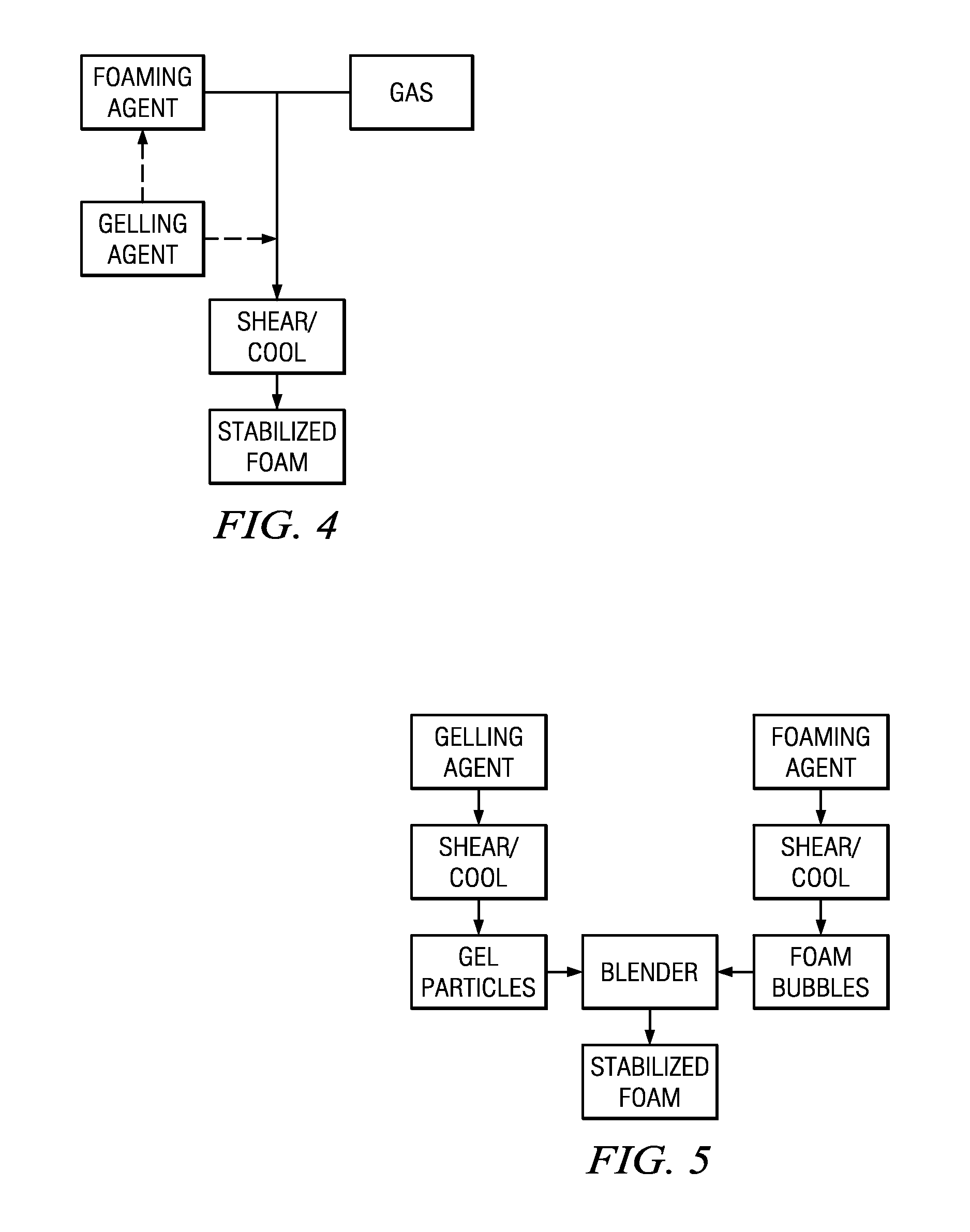Stabilized foam
a foam and stabilizer technology, applied in the field of viscous, shelf stable foam, can solve the problems of high instability of foam created in low viscosity liquid, only last, and foam created in solid materials can last for years, so as to enhance the quality of viscous food products, reduce caloric density, and improve organoleptic properties.
- Summary
- Abstract
- Description
- Claims
- Application Information
AI Technical Summary
Benefits of technology
Problems solved by technology
Method used
Image
Examples
examples 1-18
[0045]A series of gel-stabilized foam particles was created by combining a gelling agent solution, a foaming agent solution and a gas in a rotor-stator chamber. Table 1 below depicts the processing conditions used to create the gel-stabilized foam particles
[0046]
Gelling agentFoaming AgentGas Fraction(wt. %)(wt. %)(%)gellan gum (0.5)whey protein (0.5)~35gellan gum (1.0)whey protein (0.5)~35gellan gum (0.5)whey protein (0.5)~35gellan gum (1.0)whey protein (0.5)~35gellan gum (1.0)whey protein (0.5)~35gellan gum (1.0)hydrolyzed casein (1.0)44.7gellan gum (1.0)hydrolyzed casein (0.5)59.3gellan gum (1.0)whey protein isolate (0.5)25gellan gum (1.0)acetam (2.0)0high acyl gellan gum (0.25)Hydrolyzed casein (0.25)57.8high acyl gellan gum (0.25)Whey protein (1.0)65high acyl gellan gum (0.25)Whey protein isolate—(0.25)high acyl gellan gum (0.25)Lactem (0.5)—Agar (1.5)Hydrolyzed casein (0.5)54%Agar (2.0)Lactem (0.5)29%Agar (1.5)Whey protein (1.0)12%Carrageenan (1.66)Lactosylated whey protein66%(...
examples 19 and 20
[0048]Two gel stabilized foams were produced according to the embodiment depicted in FIG. 5. An egg white protein foam was mixed with gellan gum particles which were produced separately. The foaming solution was 1.5% egg white protein and had a pH of about 3.5. The gellan particles were created using a 1% gellan gum solution in a rotor stator mixing chamber. One of the foams had a gas fraction of about 40%, and the other had a gas fraction of about 60%. Both were shelf stable at ambient conditions (room temperature) for about 4 weeks, with the 60% gas fraction foam showing more disproportionation than the 40% gas fraction foam after that time.
examples 21-24
[0049]A series of gel-stabilized foam particles was created by using air at different pressures to spray a solution of gelling agent and foaming agent into a 1% calcium chloride solution (at a pH of about 4.10). The foaming agent used was PGE, and the gelling agent used was gellan gum. At air pressures of 0.1 bar, 0.3 bar, 0.5 bar, and 1 bar, about 95% of the foam bubbles in the gel particles had diameters between 0.5 and 55 microns. At air pressures of 0.1 and 0.3 bar, about 90% of the foam particles had a size between about 100 microns and 1000 microns. At air pressures of 0.5 bar and 1 bar, about 90% of the foam particles had a size between about 40 microns and 100 microns. These gel-stabilized foam particles were washed with water, and left to float in water at room temperature. After 30 days, the particles remained floating on the top of the water and showed substantially no signs of degradation. The surprising stability of the particles indicates that they would remain stable ...
PUM
| Property | Measurement | Unit |
|---|---|---|
| viscosity | aaaaa | aaaaa |
| viscosity | aaaaa | aaaaa |
| mean diameter | aaaaa | aaaaa |
Abstract
Description
Claims
Application Information
 Login to View More
Login to View More - R&D
- Intellectual Property
- Life Sciences
- Materials
- Tech Scout
- Unparalleled Data Quality
- Higher Quality Content
- 60% Fewer Hallucinations
Browse by: Latest US Patents, China's latest patents, Technical Efficacy Thesaurus, Application Domain, Technology Topic, Popular Technical Reports.
© 2025 PatSnap. All rights reserved.Legal|Privacy policy|Modern Slavery Act Transparency Statement|Sitemap|About US| Contact US: help@patsnap.com



